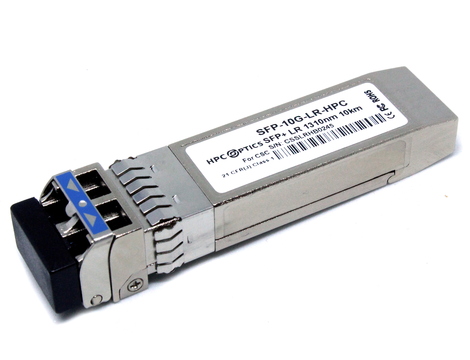When it comes to selecting Cisco modules, it is not only about stability and reliability of the module, but also price and quality along with network equipment compatibility of Cisco 10G LR SFP and data transmission that needs to be considered. If you’re new to the Cisco technology, this post will help you guide the key parameters that need to be checked when investing in the Cisco module.

Transmission Distance- The next parameter is transmission distance which must work compatible with Cisco 10G LR SFP wavelength and interface rate. It is essential to determine the transmission distance of the Cisco module for better bandwidth performance. However, when paying the attention to the transmission distance, you will also require to consider the length of the optical fiber in order to ensure that the received power must be less than the overload of the optical power. If in case, the length of the optical fiber is short, then you need to use the optical attenuation of the optical fiber to avoid burning out.
Optical Fiber Type- In general, optical fibers can be easily classified into single mode and multimode optical fibers. However, the central wavelength of the single mode optical module can be used with single mode optical fiber. Single mode fiber consists of transmission frequency bandwidth and higher transmission capacity which are ideal for long distance transmission. Whereas, the central wavelength of the multimode optical module can be used with multimode optical fibers. When compared multimode fiber has a defect of mode dispersion and its transmission performance is not up to the mark that of single mode fiber.
What Is Cisco SFP Transceiver?
The Cisco SFP transceiver is a 10G Module that is independent of the communication protocol. Being connected with switches, optic routers, network cards and so other key accessories, it is used in 10G bps Ethernet and 8.5G bps network channel systems, which can meet the higher speed requirements of data centers and realize the network expansion and conversion of data centers.
Operating Temperature- Typically, the operating temperature of Cisco modules varies as per the environment, for instance, 0℃-70℃ for commercial, -20℃-85℃ for expansion, and -40℃-85℃ for industrial. Keeping the infrastructure in mind, you will be required to make the decision accordingly.
Compatibility- This is one of the essential parameters that need consideration to avoid frequent breakdown. When investing in the right Cisco module, you will require explaining to the vendor about the devices on which the Cisco 10G LR SFP will be integrated and getting to know about the incompatibility.
Quality & After-Sales Service- This is an important parameter that pays off for years to come. After sales support of the Cisco vendor, it will help you get the most out of the chosen product and will do the necessary maintenance.
These are the most important parameters that need must consider before investing in the Cisco module. Do look at these key considerations to make the right choice that also pays off the investment.




